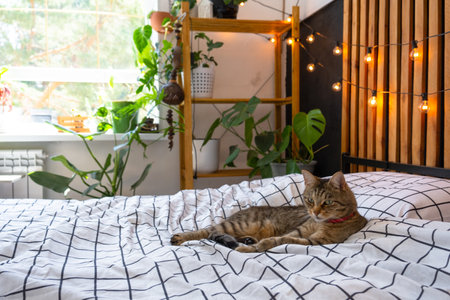Understanding Negative Corners in British Study Spaces
When considering the design and atmosphere of study spaces across the UK, it is essential to define what constitutes a ‘negative corner’ in both traditional and modern contexts. A negative corner refers to an area within a room that inadvertently accumulates stagnant energy or becomes visually and functionally disconnected from the rest of the space. In British homes and institutions, study areas often reflect distinctive architectural characteristics—think bay windows, alcoves, or awkward nooks shaped by period features or renovations. These corners may become repositories for clutter or dark spots where light fails to reach, subtly impacting concentration and mood.
Culturally, British study environments are shaped by a blend of heritage and practicality. In older properties, negative corners might emerge due to thick walls, low ceilings, or irregular layouts commonly found in Victorian terraces or Edwardian townhouses. In contrast, contemporary study spaces often prioritise open-plan living but still face challenges like underutilised corners behind doors or beside built-in shelving units. Awareness of these unique spatial dynamics is crucial; understanding how cultural preferences for cosiness (“cosy corners”) can sometimes unintentionally foster negativity helps us identify which spaces support productivity—and which do not.
2. Recognising Signs of Negative Energy
Understanding whether your study space is fostering or hindering productivity is essential, especially in British homes where space and light can vary greatly. Many students and professionals alike have noted that certain corners of their rooms simply feel “off” — but what should you look for when identifying these negative pockets? British anecdotes reveal both subtle and obvious signs that may be affecting your ability to concentrate, your mood, or even your motivation to study.
Subtle Indicators: What to Notice
Negative energy isn’t always dramatic. Sometimes it’s the little things that add up. You might find yourself avoiding a particular seat, feeling inexplicably restless, or struggling to focus despite a tidy desk. Perhaps there’s a persistent chill or dampness, common in older British properties, or just a sense that the space feels stagnant compared to the rest of your home. These are classic cues reported in many UK households.
Obvious Red Flags: When It’s Clear Something Is Wrong
More apparent signs include headaches after prolonged use of the space, frequent clutter accumulation, or technology issues that seem limited to one area. You might notice lower natural light levels due to traditional sash windows facing north, or poor air flow because of heavy curtains and thick walls. Some even report feeling more fatigued or irritable when studying in these corners — experiences echoed in British student forums and shared among university halls across the country.
Common Signs Table
| Sign | Description | Typical British Example |
|---|---|---|
| Physical Discomfort | Sore neck, headaches, feeling cold | Draughty corners near Victorian windows |
| Mental Fatigue | Lack of focus, quick exhaustion | Low ceiling attic rooms with minimal sunlight |
| Persistent Clutter | Mess gathers quickly even after tidying | Narrow alcoves under stairs filled with papers |
| Mood Changes | Irritability, anxiety, lack of motivation | Basement studies with little view outdoors |
| Technology Issues | Poor Wi-Fi or frequent device malfunctions | Stone-walled cottages interrupting signals |
Cultural Insights: A British Perspective on Study Space Energy
The unique architecture and climate of Britain often amplify these effects. For instance, the traditional British approach to privacy — heavy drapes and closed doors — can inadvertently create stagnant areas if not balanced with regular ventilation. Equally, many students recall stories from “uni digs” where certain nooks became infamous for being unwelcoming or unproductive until adjustments were made. By becoming attuned to both the subtle cues and overt red flags described above, you’ll be well placed to identify negative corners and begin transforming your study environment into a positive and inspiring space.

3. Common Causes in UK Homes and Student Accommodation
British homes and student accommodation often present unique architectural and decorative features that can unintentionally foster negative corners within study spaces. Understanding these common causes is essential for anyone seeking to create a productive and harmonious environment.
Traditional Architecture and Room Layouts
Many UK homes, especially Victorian terraces or Georgian flats, feature alcoves, bay windows, or oddly-shaped rooms. While charming, these elements may result in awkward nooks that easily become neglected or misused, gathering dust and accumulating unnecessary items.
Clutter and Overcrowding
Student halls and shared housing frequently suffer from limited space, leading to overcrowded desks, piles of books, and miscellaneous clutter. British students often juggle multiple housemates and compact living areas, making it easy for negative corners to form where organisation lapses.
Lack of Natural Light
Many older British buildings have small or north-facing windows, restricting the influx of natural light. Dim corners not only affect mood but can also hinder focus and motivation. These shadowy pockets are particularly common in converted basements or attic rooms popular among students.
Overlooked Spaces
Niches behind doors, under staircases, or around radiators are often ignored during everyday cleaning or decorating routines. In both traditional homes and modern student accommodation blocks, these overlooked spaces can quickly devolve into stagnant zones that disrupt the overall energy flow of a study area.
By recognising these prevalent architectural quirks and lifestyle habits within UK residences, you can take proactive steps to address negative corners before they impact your study experience.
4. Practical Design Solutions Rooted in British Style
Transforming negative corners into productive and inspiring areas can be elegantly achieved by weaving traditional British design principles into your study space. The following practical solutions are both aesthetically pleasing and highly functional, perfectly tailored to the unique character of British homes.
Repositioning Furniture for Optimal Flow
Start by assessing the placement of desks, chairs, and storage units. In many British interiors, space is at a premium, so clever furniture arrangement can maximise light and reduce cramped feelings in awkward corners. Angle desks towards natural light sources or architectural features such as bay windows or period fireplaces, enhancing both focus and ambience. Avoid pushing all furniture against the walls; instead, float pieces to create inviting nooks with a sense of intimacy.
Choosing Heritage Colours for Calm and Focus
Colour plays a vital role in remedying negative energy. Draw inspiration from classic British palettes: deep navy blues, moss greens, muted mustards, and warm neutrals evoke a sense of calm and tradition. These hues not only reflect the timeless charm of British interiors but also foster concentration and relaxation.
| Heritage Colour | Effect on Study Space | Suggested Application |
|---|---|---|
| Navy Blue | Encourages focus and sophistication | Feature wall or built-in shelving |
| Moss Green | Promotes tranquility and creativity | Soft furnishings or cabinetry |
| Warm Grey | Adds subtlety and warmth | Main wall colour or flooring accents |
| Mustard Yellow | Sparks energy without overwhelming | Cushions or desk accessories |
Utilising Iconic British Accessories for Character and Comfort
Incorporate quintessentially British decorative elements to enliven previously neglected corners. Think vintage desk lamps reminiscent of Oxbridge libraries, classic tartan throws draped over armchairs, or framed prints of famous British landscapes. Accessories like antique bookends, ceramic teapots, or brass stationery trays not only provide practical value but also reinforce a sense of heritage and belonging.
Accessorising Tips:
- Lamps: Choose adjustable banker’s lamps or brass desk lights for task lighting.
- Cushions & Throws: Use woollen textiles in houndstooth or plaid patterns to add texture.
- Wall Art: Hang watercolours of English countryside scenes or literary quotes for inspiration.
- Storage: Opt for leather-bound boxes or wooden trays to keep essentials organised in style.
A Harmonious Blend of Beauty and Utility
The secret to remedying negative corners lies in balancing form with function. By grounding your design choices in iconic British aesthetics—through thoughtful furniture placement, heritage colours, and curated accessories—you can transform overlooked spaces into delightful pockets of productivity and charm within any study environment.
5. Incorporating Natural Elements and British Traditions
Infusing your study space with natural elements and cherished British traditions can dramatically counteract negative corners, transforming them into inviting, energised zones. A thoughtfully chosen plant—be it a classic potted fern or a cluster of aromatic herbs on the window ledge—not only purifies the air but also brings a sense of calm rooted in the English countryside. Beyond greenery, textiles play an essential role: drape patterned curtains featuring florals or heritage checks to soften harsh angles and echo the warmth of a traditional British home. Consider layering your chair with a Welsh wool blanket; its comforting texture and time-honoured craftsmanship provide both physical cosiness and a subtle emotional uplift. Locally inspired artefacts such as vintage teacups, brass desk lamps, or framed watercolours of rural scenes add layers of narrative that reflect personal history and national identity. By blending these iconic touches—verdant plants, tactile textiles, and meaningful decor—you not only neutralise negative energy but also create a study nook that celebrates British character and fosters focused inspiration.
6. Maintaining a Positive Study Atmosphere
Ensuring your British study space remains inviting and uplifting is an ongoing process, not a one-off task. The secret lies in weaving simple, thoughtful habits into your daily and seasonal routines. One cherished British tradition that can breathe new life into any study corner is the classic tea break. Setting aside time for a calming cup of tea—perhaps with a biscuit or two—provides a mindful pause, allowing you to reset both the energy of the room and your own mental focus.
Regular Decluttering Rituals
Make it a habit to tidy up at the end of each study session. Return books to their shelves, recycle old papers, and dust surfaces regularly. This small act prevents stagnation and keeps negative corners from accumulating clutter or stagnant air, maintaining an environment conducive to learning and creativity.
Seasonal Décor Refreshes
The British calendar is marked by distinct seasons, each offering inspiration for subtle décor changes. In spring, introduce vases of fresh daffodils or tulips; in autumn, swap in cosy throws or cushions in warm hues like ochre or burgundy. Even small touches such as changing lampshades or adding festive bunting during holidays can revitalise forgotten corners and keep your study space feeling current and cared-for.
Natural Light and Greenery
Position your desk near a window to maximise natural light—a valued feature in British homes, especially during grey months. Adding a potted plant or two, such as hardy English ivy or rosemary, not only purifies the air but brings a touch of nature indoors, infusing the space with calm vitality.
Personal Reflection Time
Finally, incorporate moments for self-reflection at the end of each week. As you enjoy your tea, take stock of what’s working in your study space and which corners might need further attention. By honouring these ongoing rituals—rooted in both practicality and British cultural rhythms—you’ll maintain a positive atmosphere where learning and inspiration can truly flourish.


